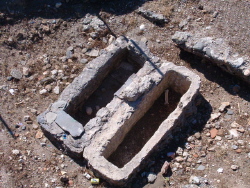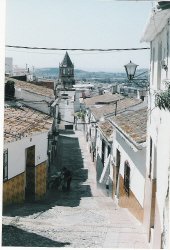|
Sightseeing in the alternative Costa del Sol.Evidence of a rich history is liberally scattered around the Axarquia region with prehistoric caves, Roman ruins, Moorish palaces and Gothic churches all providing the visitor with the opportunity to explore the fascinating stories from the past that have played such an important part in shaping the culture of Spain and Andalucia today.
First Settlers 800,000BC - 200BCThe first hunter-gatherers inhabited the Iberian Peninsular at aound 800,000BC. Evidence of these people living in the Axarquia region is to be found at the caves in Nerja (Cuevas de Nerja) and Rincon de la Victoria (Cueva del Tesoro) which both contain paintings thought to be about 20,000 years old. For further information including visiting times and prices etc. click on caves. The Romans 200BC - 500ADVarious groups of settlers and invaders arrived in Spain from around Europe including the Phoenicians in about 1100BC followed by the Greeks and Celts but the first group to really leave its mark on the Axarquia was the Romans. Having taken over in 200BC they remained in charge for about 700 years bringing their own brand of civilisation to the country.

The best Roman remains in the region are at Torrox Costa where the Necropolis or cemetery and the Fish Factory where fish were salted and turned into a fish sauce for seasoning food, are well presented to the public beneath a transparent viewing platform adjacent to the lighthouse at the end of Avda. del Faro. Further afield in central Malaga you can see the Roman Amphitheatre that they are currently excavating situated alongside the entrance to the Alcazaba which also houses an archeological museum displaying interesting Roman as well as Phoenician and Moorish artifacts.
Al Andalus 711AD - 1492ADThe Moors first arrived from North Africa in 710AD and their Caliphate or Kingdom - Al Andalus - which lasted until they were finally expelled from Granada in 1492AD, undoubtedly left the biggest impression on the Andalucia of today. Malaga was the principal port of the Caliphate and the Alcazaba or castle which was built in the 8th century is well worth a visit. For details click on
Malaga Alcazaba.
Nearby Granada, the last stronghold of Al Andalus, houses the most famous Moorish castle of all - the Alhambra. Begun in the 13th century it contains stunning architecture and intricate decoration along with extensive gardens filled with fountains and water features. For more information click on Granada Alhambra. The Catholic Monarchs 1492AD - 1700ADWhen Fernando and Isabella finally managed to expel the Moors from Granada in 1492, there followed a frenzy of church building and mosque conversion in Andalucia. Granada itself houses a stunning gothic cathedral which was begun in 1523 and adjacent to it is the royal chapel, Capilla Real, which holds the bodies of Fernando and Isabella themselves.For more information click on Granada cathedral and royal chapel. Malaga's cathedral was begun in 1528 but was never finished - work was abandoned in 1765 due to a lack of funds. for more information click on Malaga cathedral. Hundreds of churches dating from the 16th century onwards, many of which are converted mosques, are scattered all over the Axarquia region and are generally worth a look around inside.
For more information look at our destination reports or use the following links:
Sightseeing in Nerja
|




